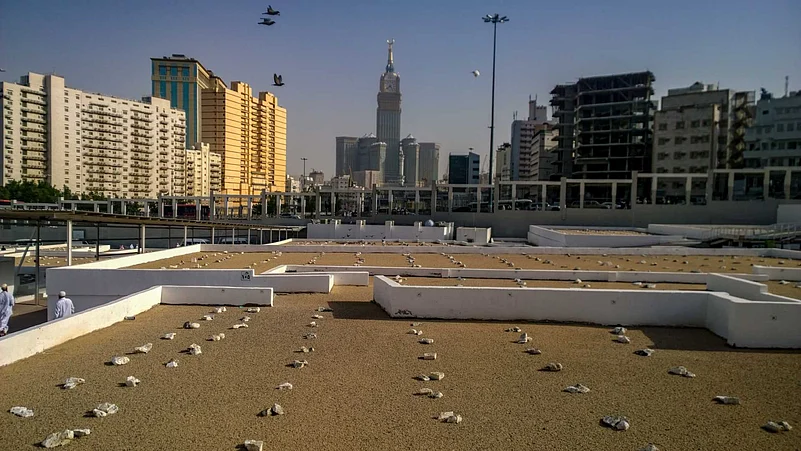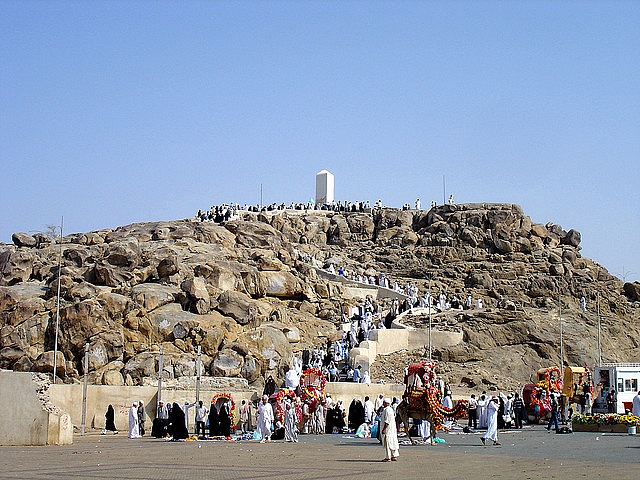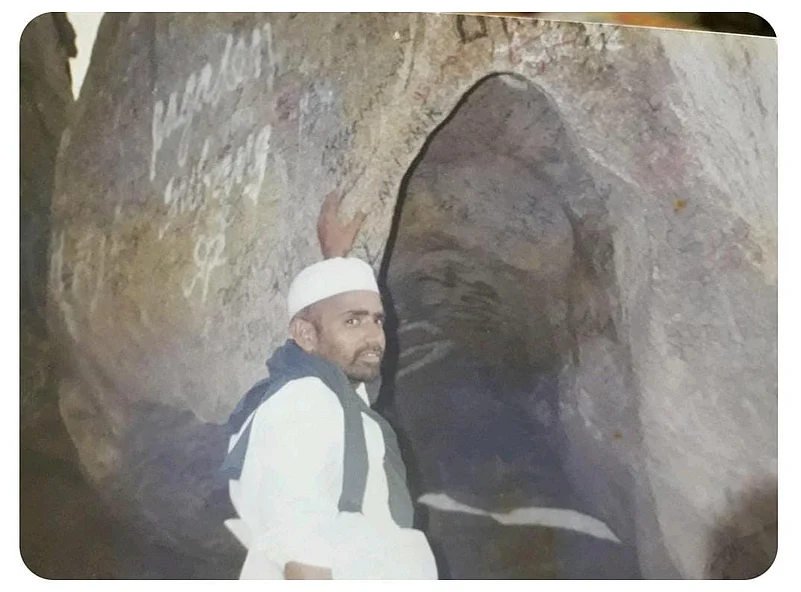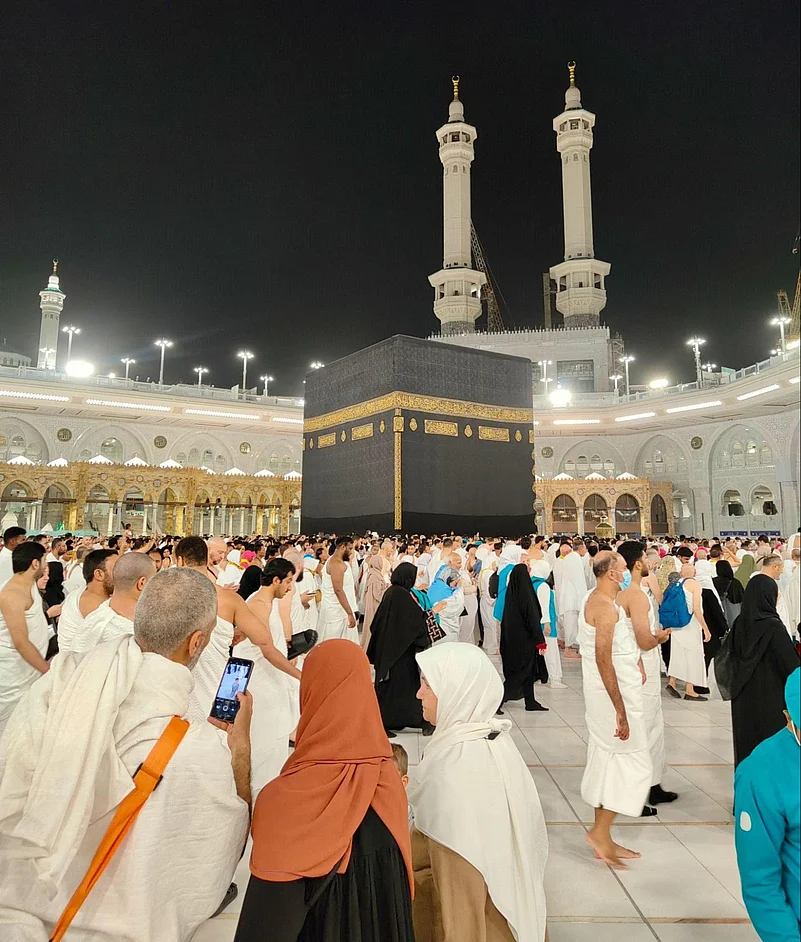Mecca, or Makkah, is the most sacred city in Islam, known as the birthplace of the Prophet Muhammad (peace be upon him) and the home of the Ka’aba, the holiest site in Islam. It is the city that never sleeps, continuously echoing with the prayers of millions who visit for pilgrimage and worship. Allah has honored this land above all others, making it a sanctuary where certain actions permitted elsewhere are restricted in reverence to its sacredness. The Qur’an states: "The first House (of Prayer) established for mankind is the one at Bakkah (Mecca): a blessed place, a guidance for all worlds." (Surah Aal-e-Imran 3:96)

A man offers his prayers as he prepares to break his fast during Maghrib at Masjid al-Haram.
This sacred city serves as the central destination for the annual Hajj and Umrah pilgrimage, drawing millions of Muslims who come in devotion, seeking forgiveness and spiritual renewal.
As Mecca continues to welcome millions of worshippers, Saudi Arabia recently set a new record for the highest number of Umrah performers in a single day. On Thursday, March 6, approximately 500,000 pilgrims entered the Masjid al-Haram, according to the General Presidency for the Affairs of the Grand Mosque and the Prophet라이브 바카라 Mosque. This milestone reflects the unwavering devotion of Muslims worldwide, especially during the spiritually significant period of Ramadan.
Key Features of the Ka'bah
Al-Hatim (Hijr Ismail)

This semi-circular area next to the Ka'bah was originally part of it. Praying inside this space is equivalent to praying inside the Ka'bah itself.
The Black Stone (Hajr Aswad)

This sacred stone, believed to have come from Paradise, marks the starting and ending point of Tawaf. It is an honor to touch or kiss it.
Al-Multazam

This image captures the Multazim, the sacred area where pilgrims earnestly supplicate and seek blessings.
The Yemeni Corner

Facing Yemen, this corner is significant in Tawaf, as the Prophet (peace be upon him) would touch it while circumambulating. Rukn Yamani is a very important corner of the House of Allah. It is believed by the Shia and Sunni scholars that when Imam Ali's (AS) mother was going to give birth, Allah opened that corner so she could enter. Imam Ali (AS) was born in the Kaba, and his eyes did not open until the Prophet Muhammad (PBUH) held him and opened his eyes, so he (PBUH) was the first face Imam Ali (AS) ever saw.
During Ramadan, the spiritual atmosphere in Mecca becomes even more profound. The city is filled with worshippers praying, fasting, and reflecting on their faith. Beyond the well-known sites like the Grand Mosque - Masjid al-Haram and the Ka’bah, Mecca is home to lesser-known yet deeply significant landmarks, each carrying centuries of Islamic history.
Exploring Mecca라이브 바카라 Lesser-Known Sacred Sites
As Ramadan approaches—a time of heightened devotion and self-reflection—visiting these sites can enhance one라이브 바카라 spiritual experience and strengthen one라이브 바카라 connection with Islamic history.
1. Jabal Al Nur – The Mountain of Light

Jabal Al Nour, or the Mountain of Light, is one of Mecca라이브 바카라 most revered sites. It is here that the Prophet Muhammad (peace be upon him) received his first revelation from Angel Jibreel (Gabriel) in the Cave of Hira. The moment marked the beginning of Islam, changing the course of history forever. Many pilgrims climb this steep mountain, reflecting on the Prophet라이브 바카라 solitude and the weight of his divine mission.
During Ramadan, the significance of Jabal Al Nour becomes even more profound. It was during this blessed month that the first verses of the Qur’an were revealed, emphasizing the importance of guidance, patience, and devotion. Standing atop this mountain, one can truly feel the spiritual intensity of that first divine encounter.
2. Al Mualla Cemetery – The Resting Place of the Pious

Al Mualla Cemetery, also known as Jannat Al-Muallaa, is one of the oldest Islamic burial sites. It is the final resting place of many significant figures, including the Prophet Muhammad라이브 바카라 first wife, Khadija bint Khuwaylid, his grandfather Abdul Muttalib, and other early companions.
During Ramadan, visiting this sacred place serves as a reminder of the sacrifices made by those who upheld Islam in its earliest days. It is a place of reflection, where one can make dua (supplications) for the departed and appreciate the resilience of the pioneers of faith. Their unwavering dedication allowed Islam to flourish, shaping the religion that guides over a billion people today.
3. Jabal al-Rahmah – The Mountain of Mercy

Located in Arafat, Jabal al-Rahmah is believed to be the site where Prophet Adam and his wife Hawa (Eve) reunited after being forgiven by Allah for their transgression. This location holds immense significance, especially during Hajj, as standing in Arafat is one of the key rituals of pilgrimage.
In the holy month of Ramadan, Jabal Rahma symbolizes Allah라이브 바카라 infinite mercy and forgiveness. It serves as a reminder that no matter how far one may have strayed, sincere repentance always leads to Allah라이브 바카라 compassion. Many pilgrims visit this site, praying for personal and collective forgiveness, especially as Ramadan is the best time to seek Allah라이브 바카라 mercy.
4. Cave of Thawr: A Refuge in Migration

The Cave of Thawr, situated in the lower region of Makkah, holds great historical and spiritual significance. During the Prophet Muhammad's (peace be upon him) migration from Makkah to Madinah, he sought refuge in this cave along with his close companion, Abu Bakr (may Allah be pleased with him). This moment of seclusion became a crucial part of Islamic history, symbolizing faith, trust in Allah, and divine protection during times of hardship.
5. Safa and Marwa

Safa and Marwa are two small yet significant hills near the Kaaba in Mecca. They hold deep spiritual meaning in Islam, as they are central to the ritual of Sa’i—where pilgrims walk back and forth between them seven times during Hajj and Umrah.
The story of Safa and Marwa is tied to Hajra, the wife of Prophet Ibrahim (AS), and her unwavering faith. When Ibrahim was commanded by Allah to leave Hajra and their infant son, Ismail, in the barren desert of Mecca, he obeyed, praying for their well-being. As time passed, their food and water ran out, and little Ismail became extremely thirsty. Desperate to find water, Hajra climbed Safa, searching for any sign of help. Seeing nothing, she ran to Marwa and back again, repeating this search seven times under the scorching sun.
As little Ismail (AS) lay on the hot desert ground, crying in thirst, he rubbed his tiny feet against the earth. By Allah라이브 바카라 command, a spring of water suddenly burst forth from beneath him. His mother, Hajar (RA), overjoyed and grateful, quickly gathered the flowing water, shaping it into a well—now known as the sacred Zamzam well. This miraculous spring has continued to flow for centuries, quenching the thirst of countless pilgrims in Makkah.
Today, every pilgrim performing Hajj or Umrah retraces Hajra라이브 바카라 steps between Safa and Marwa, honoring her perseverance and faith in Allah라이브 바카라 mercy.















